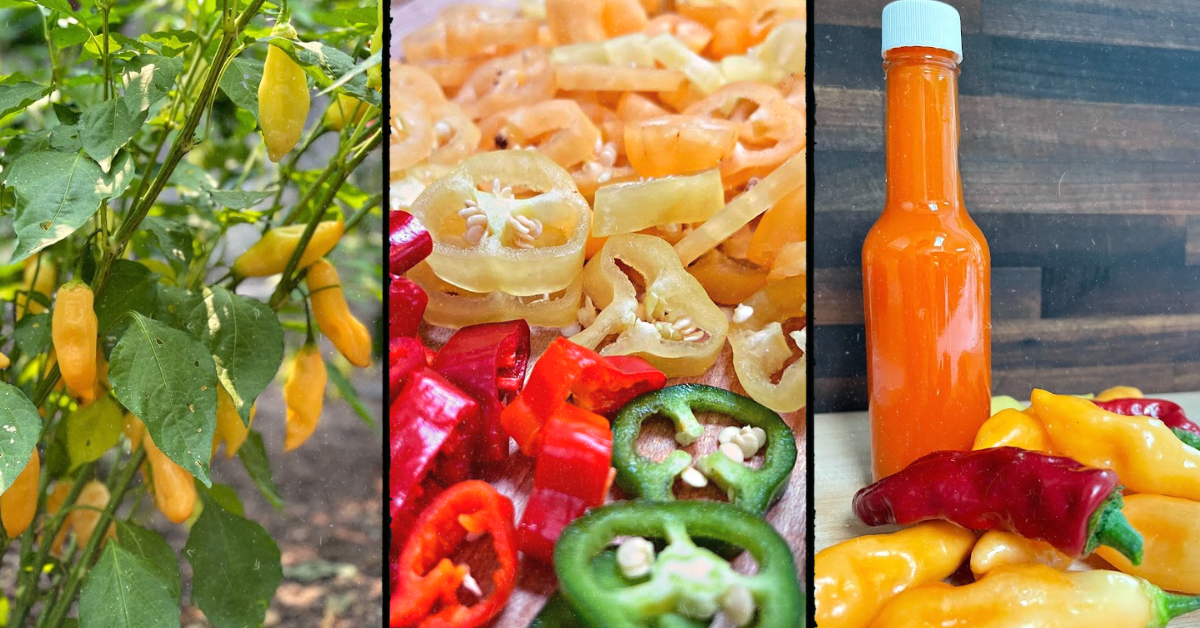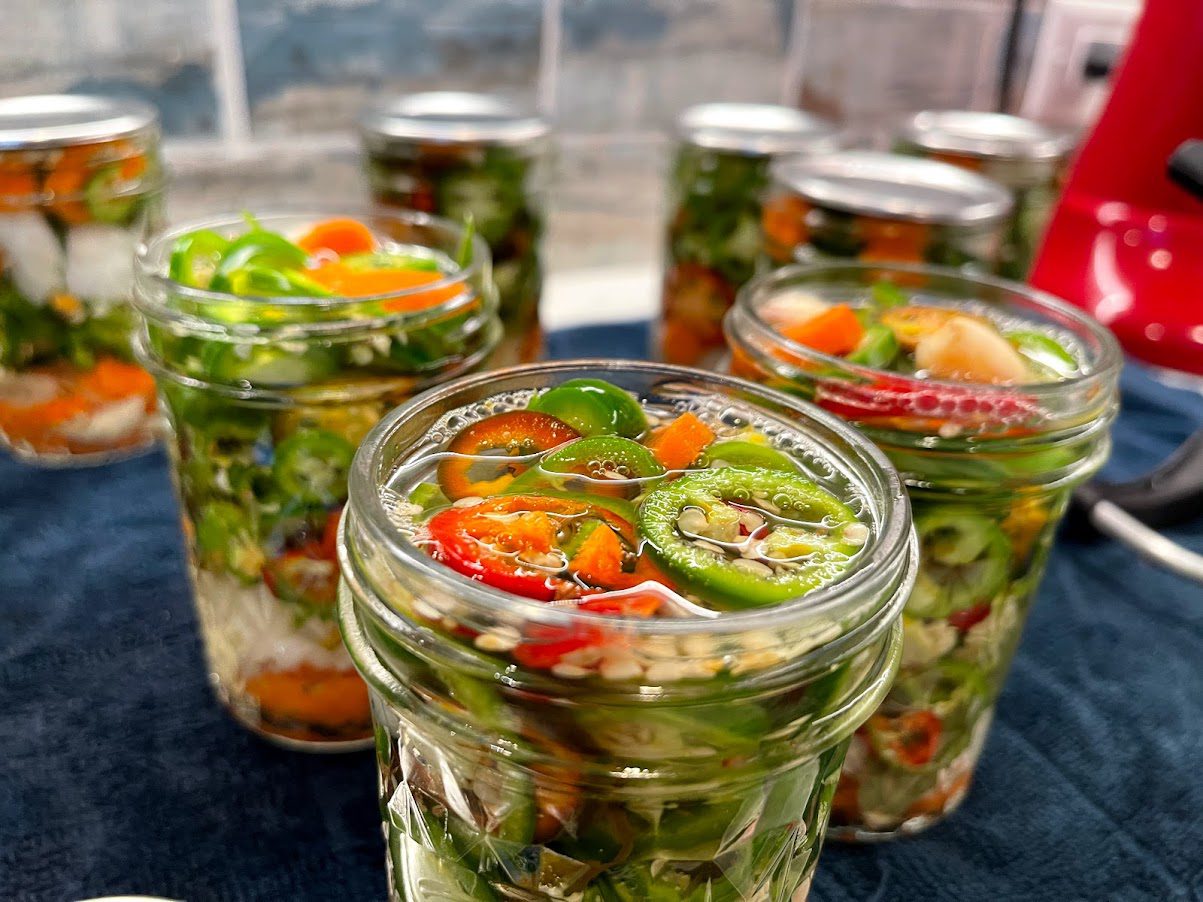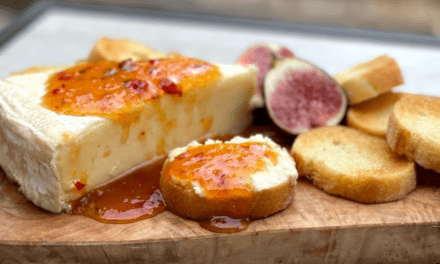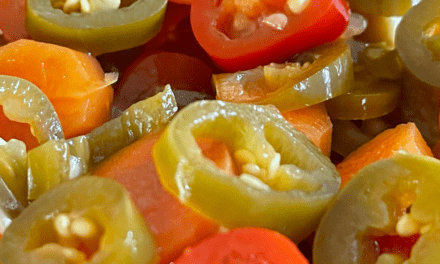In the kitchen
Lacto Fermented Hot Sauce
Why Ferment?
Another way to get the most out of your peppers and reap the health benefits for your gut flora is to make homemade fermented hot sauce. And it tastes great, too!
Heath benefits of fermented hot sauce
Fermented foods are rich in probiotic bacteria. Adding them into your diet and you’re adding beneficial bacteria and enzymes and increasing the health of your digestive system.
Hot peppers contain capsaicin, a natural pain reliever and anti-inflammatory. According to Healthline.com, test-tube studies indicate that capsaicin may slow the growth and spread of certain types of cancer cells.
Ingredients
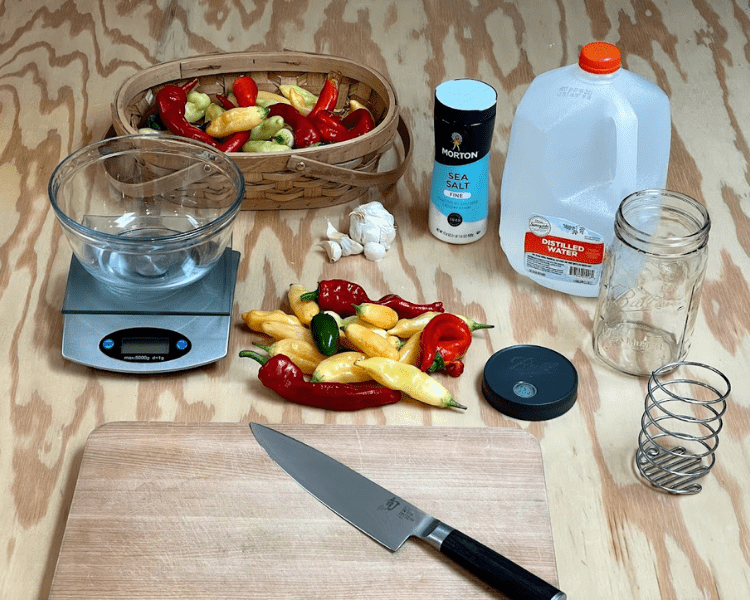
Hot Peppers
1 Cup or 200 grams
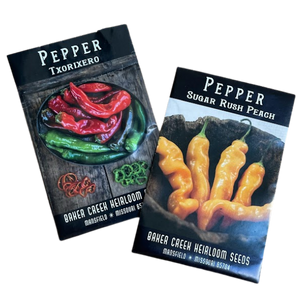
Any hot pepper will work. I grew Sugar Rush Peach peppers this year (The Scoville heat rating is 100,000 to 150,00) and Txorixero peppers (Pronounced (cho-dee-share-dow) from Basque Country and can be dried to make paprika) I even threw in a few jalapeños for good measure!
Sea Salt
4 & 1/2 teaspoons or 20 grams
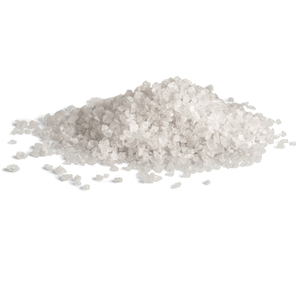
You can use any salt EXCEPT your standard table salt. (table salt has been processed) Here are some perfectly great salts to use for fermentation
Sea salt, Kosher salt, Himalayan pink, Fleur de sel, gray salt, Hawaiian Alaea red salt, Celtic sea salt, or pickling salt.
Distilled Water
1 & 2/3 Cups or 400 grams
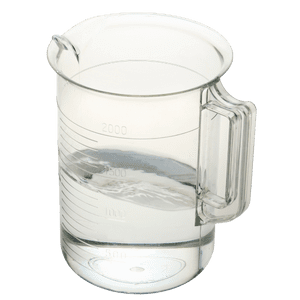
Distilled or purified water will work for this recipe. Stay away from tap water, as it will have chlorine (among other things) that will inhibit the natural bacterial growth needed for the fermentation process to occur. You want pure water for this recipe.
Garlic (2-4 cloves)
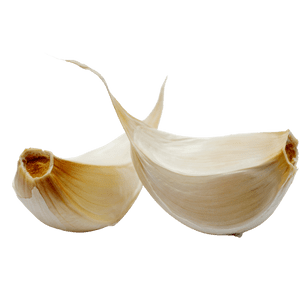
Garlic is not a necessary ingredient but will add a little bit more flavor to your hot sauce. Onion may also be added if desired.
1/4 cup Apple Cider Vinegar
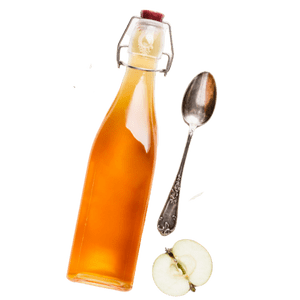
This can be used at the end of the fermentation process for a little added zip. Plus ACV is already fermented, so it’s a double hit of probiotics!
Instructions

Slice hot peppers into 1 inch discs
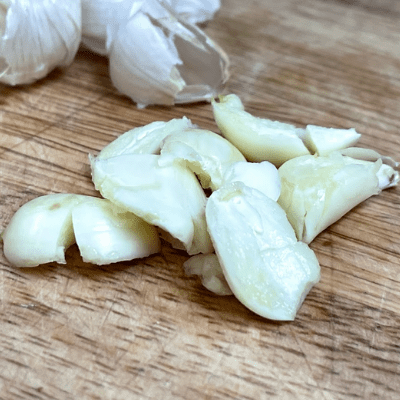
Rough Chop garlic cloves

Add peppers, garlic, and salt to clean mason jar

Fill jar with distilled water. Give it a good shake to dissolve salt
Alternatively, you can use the brine method. On your stovetop set to low, simmer the water and salt until the salt is dissolved. Add cooled liquid to your pepper and garlic filled jar
Make sure all pepers are fully submerged in the bring. Loosely seal with a standard lid or use a fermentation lid
Store in a cool & dark location for 1-4 weeks. If your peppers are not weighted down, Stir daily, replacing the lid each time
Make sure your lid is very loose. You need the natural fermentation gas to escape and not build up pressure. Keeping a small plate under the jar will catch any liquid that may drip over the top. If you don’t have a dark location to store your jar, you can cover it with a dark towel.
If you don’t have a fermentation weight to keep your peppers submerged, stirring daily will prevent mold growth. When stirring your peppers, use a plastic or wooden utensil. Never a metal one! (metal isn’t good for the fermentation process. It will react with the acid that the bacteria produces)
I highly recommend a fermentation lid or a fermentation kit to make this process very simple. You don’t need one, however, and you can simply “burp” your jar by opening the lid every day to release the gas buildup.
Glass fermentation weights can also be used to submerge your peppers. I used this kit, and added a layer of an onion to hold down the small peppers that wanted to float to the top.
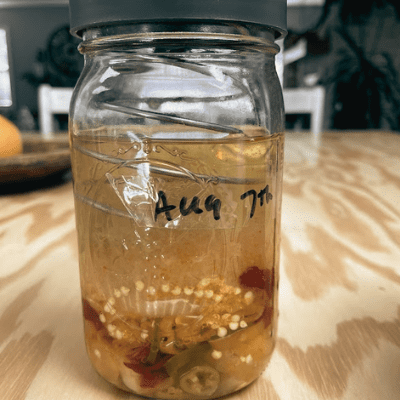
Bring your jar out 2-4 weeks later
The brine will turn cloudy as your peppers ferment. The longer you ferment, the deeper the flavor, but anything after 4-6 weeks won’t be significantly better (from my experience)

Blend away!
Add the entire jar of peppers, garlic, and liquid to your blender. Blend on high for about a minute. (You’ll get a slightly sour smell, similar to pickles) At this point, you can blend in a 1/4 cup apple cider vinegar, if desired.
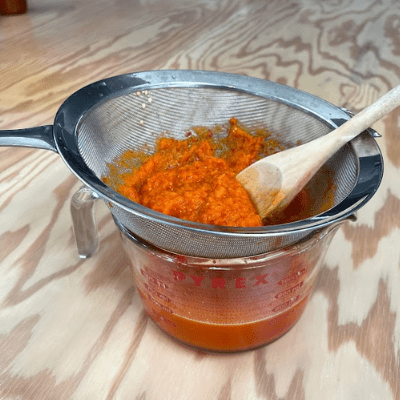
Using a fine mesh strainer, strain out the liquid from the solids
You can use both the liquid and the pepper solids, so don’t throw anything away yet!
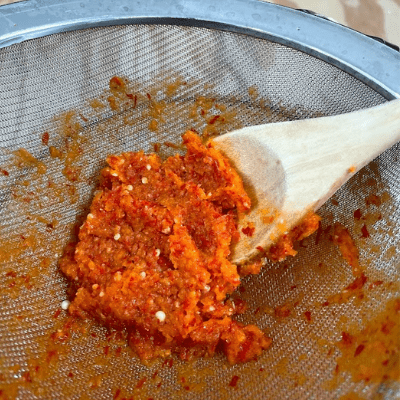
you'll be left with about 1/4 cup of of pepper-garlic mash
You can also choose to use a cheesecloth to extract all the liquid. Make sure to wear gloves, if you choose this method.
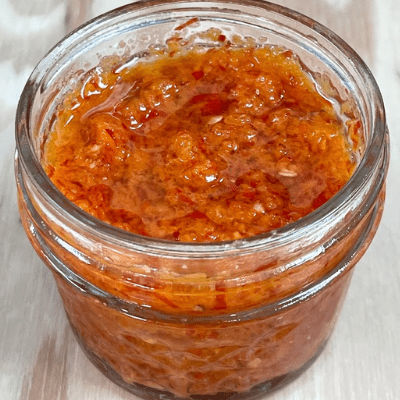
Add the pepper mash to extra virgin olive oil
Nothing goes to waste with this recipe! Mix the pepper mash with olive oil and store it in a glass jar. This will keep for 1-3 years in the refrigerator. You can use your fiery hot pepper-garlic-infused oil to any recipe to add a little kick of hot flavor yumminess! Eggs, stir fry, soup, chicken…the uses are endless!

Bottle the liquid
Use any glass bottle to store your hot sauce. (cleaning out an old hot sauce jar works great!) Refrigerate and it can last up to 3 years! But really, you’ll use it up long before then! (the addition of vinegar can extend the life of your hot sauce, however with time the flavors and heat may decline the longer you store it.
Note: The hot sauce will separate as it’s stored, with the heavier particles settling on the bottom. So give it a little shake each time you use it.
The combination of the yellow Sugar Rush Peach pepper and the red Txorixero peppers produced the most beautiful color of orange for this hot sauce. Obviously, the color of the peppers you choose will affect the final product.
Try different hot peppers and embrace the pepper rainbow!
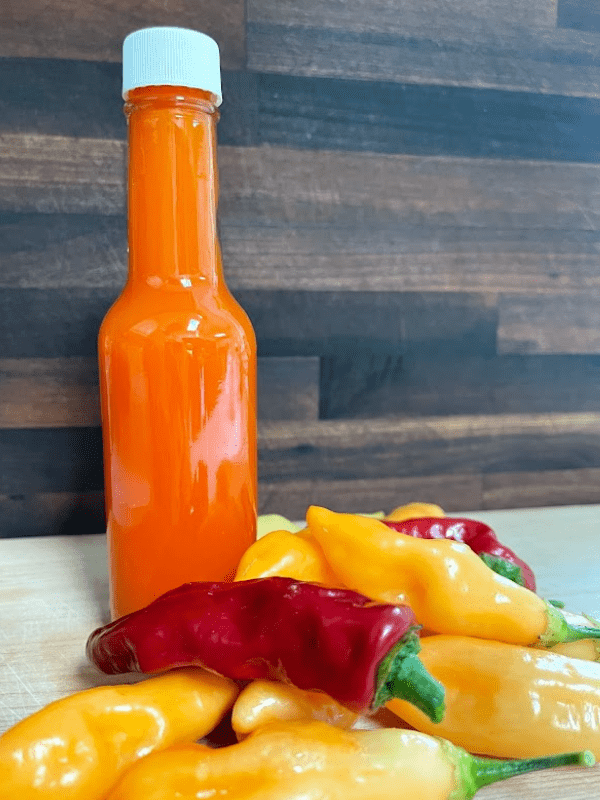
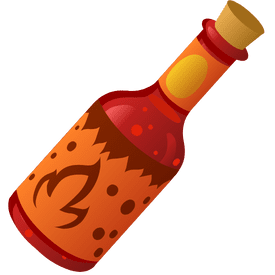

I grew several pepper plants in the garden this year. They produce peppers from July-November! (here in Zone 9a) We’ll get so many peppers! And they are perennials, so I can cut the plants down for the winter and expect another bumper crop next year!
Here’s a great tutorial on how to prune your pepper plants this winter:
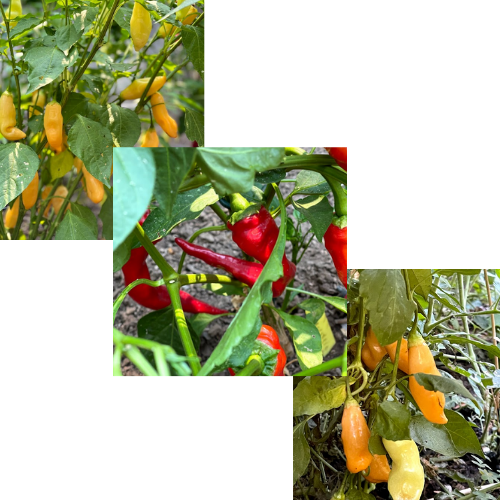

Looking for another great hot pepper recipe?
With the abundance of peppers in the garden, finding uses for all of them led me to the best pickled jalapeno recipe ever! Click the photo above for the step-by-step process for Taqueria Style Jalapeno Peppers.
This post may contain affiliate links. Danelia Design is a participant in the Amazon Services LLC Associates Program, an affiliate advertising program designed to provide a means for sites to earn advertising fees by advertising and linking to amazon.com. For more information, please read my disclaimer here.
